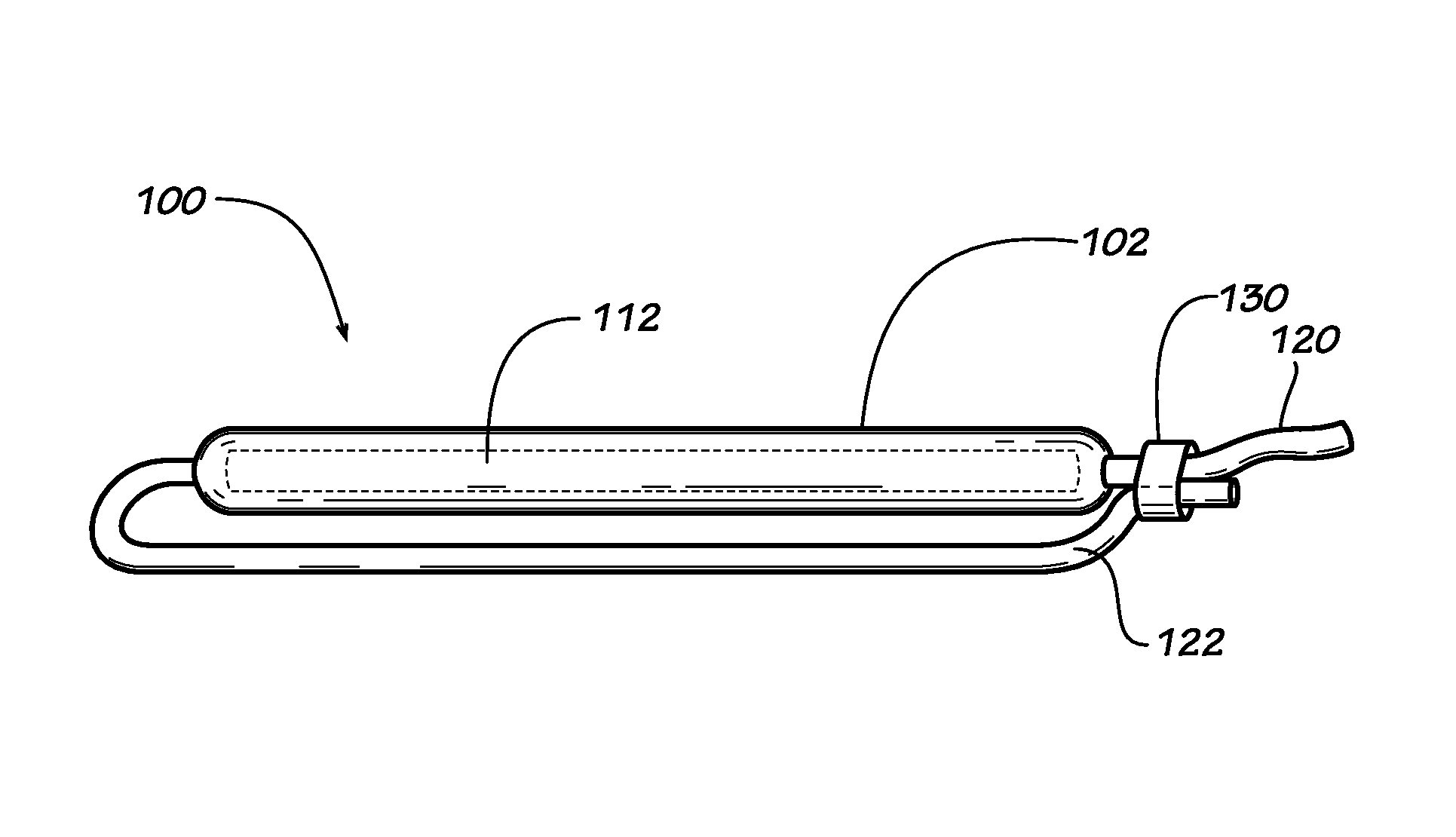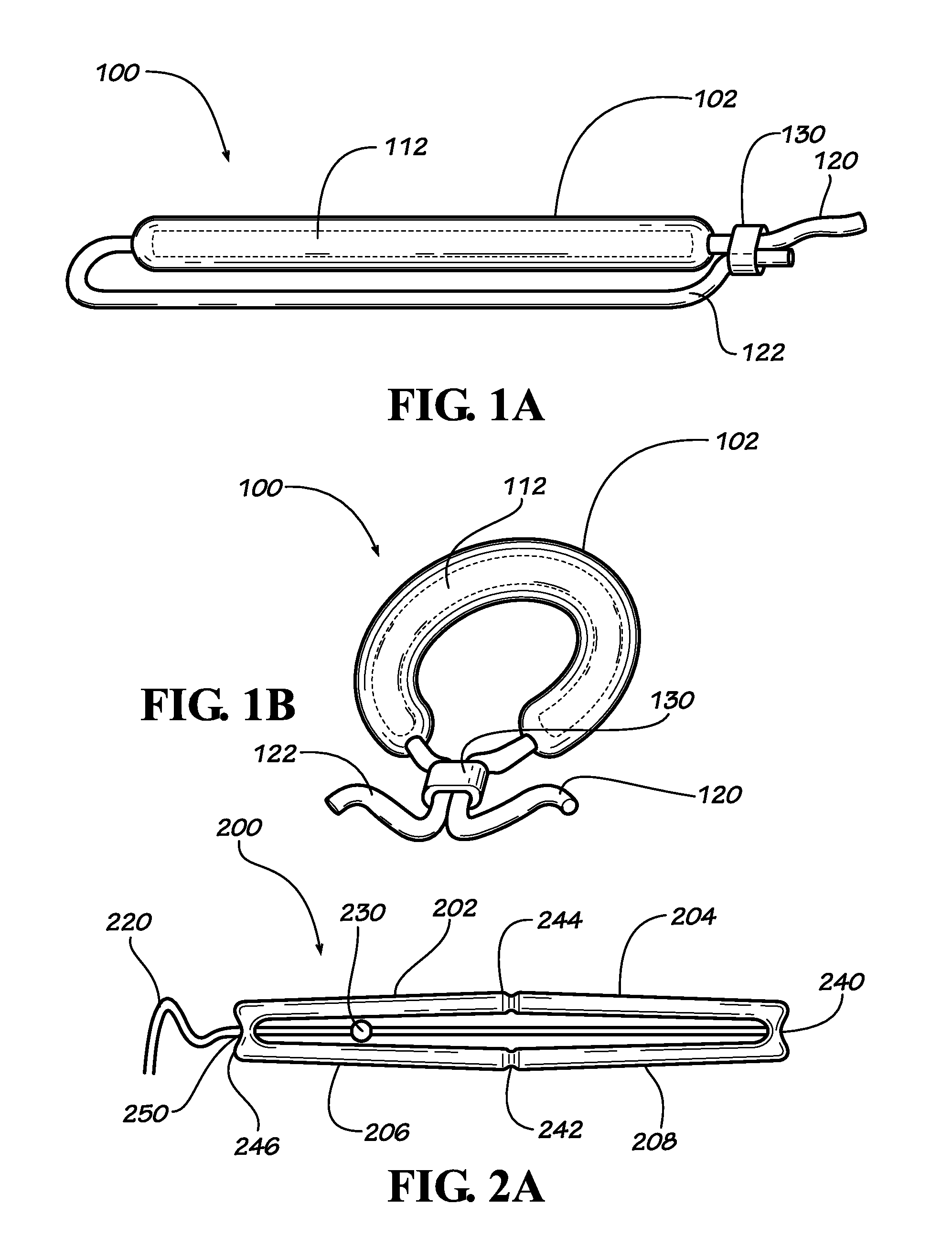Implantable drug delivery devices for genitourinary sites
a technology of implantable devices and genitourinary sites, which is applied in the field of implantable medical devices, can solve the problems of frustrating drug delivery, many implantable devices are not suited for the bladder, and cannot achieve continuous drug delivery over an extended period, so as to facilitate implantation in the body, prevent lengthening of the filaments, and facilitate the retention in the body
- Summary
- Abstract
- Description
- Claims
- Application Information
AI Technical Summary
Benefits of technology
Problems solved by technology
Method used
Image
Examples
Embodiment Construction
[0023]Described herein are implantable devices that can be deployed through a natural orifice or lumen of the body into a body cavity and can be retained in the body cavity once implanted. In particular embodiments, the devices can deliver drug locally to the implantation site or regionally once implanted. For the purposes of the present disclosure, the term “implantation site” generally refers to a site within the body of a human patient or other animal. The implantation site can be any genitourinary site, such as the bladder, urethra, ureters, kidneys, prostate, seminal vesicles, ejaculatory duct, vas deferens, vagina, uterus, fallopian tubes, ovaries or any other location within a urological or reproductive system of the body, among other locations. In particular embodiments, the implantation site is the bladder.
[0024]Devices fix the bladder can be deployed through the urethra into the bladder in a minimally invasive deployment procedure. For example, the devices may be deployed ...
PUM
 Login to View More
Login to View More Abstract
Description
Claims
Application Information
 Login to View More
Login to View More - R&D
- Intellectual Property
- Life Sciences
- Materials
- Tech Scout
- Unparalleled Data Quality
- Higher Quality Content
- 60% Fewer Hallucinations
Browse by: Latest US Patents, China's latest patents, Technical Efficacy Thesaurus, Application Domain, Technology Topic, Popular Technical Reports.
© 2025 PatSnap. All rights reserved.Legal|Privacy policy|Modern Slavery Act Transparency Statement|Sitemap|About US| Contact US: help@patsnap.com



